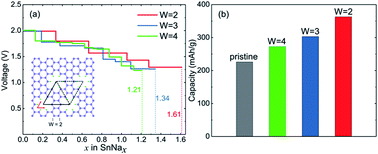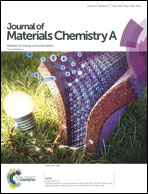Stanene nanomeshes as anode materials for Na-ion batteries
Abstract
Two-dimensional (2D) materials are showing promising potential in energy storage applications such as being used as electrodes of metal-ion batteries. Here, we explore the possibility of using 2D stanene as anode material in the Na-ion battery using first-principles calculations, and particularly elucidate the role of a nanomesh structure in improving the battery performance. Our results show that 2D stanene tends to form nanohole defects that consist of six Sn vacancies in a hexagonal ring, and the hydrogen passivation on the edge of the nanoholes can further lower the formation energy. On the basis of this finding, we model a nanohole-patterned stanene nanomesh (SnNM) structure and evaluate its performance as an anode material in the Na-ion battery. It is found that the nanohole defects in the 2D stanene can increase Na binding intensity and lower the Na diffusion energy barrier as low as 0.15 eV. A denser SnNM is expected to further improve battery performance because of the larger capacity, lower Na diffusion energy barrier, and resulting faster charge–discharge rate. This work shows that a nanomesh structure in the 2D material is beneficial to enhance the performance of metal-ion batteries.

- This article is part of the themed collection: 2018 Journal of Materials Chemistry A HOT Papers


 Please wait while we load your content...
Please wait while we load your content...
